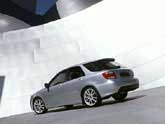Recent Articles
Popular Makes
Body Types
2005 Saab 9-2X Road Test
FrankenSaab
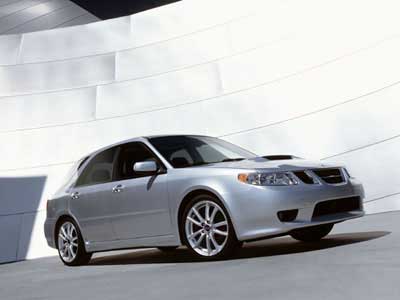
IRVINE, Calif. – Quirky is a word used to describe people, places and things that are unusual, offbeat, and outside of society’s mainstream. Relatively mild as adjectives go, quirky leans more toward negative than positive connotations, and rarely identifies endearing characteristics. Take the quirky guy in the next cubicle, for example, the dude with the facial tic, the bowties, the Hello Kitty calendar, and the snazzy red Swingline stapler. He’s nice enough, knows his business, performs well for the company, and is even interesting to talk to, but you’re not likely to hang at the local watering hole during happy hour or accept any Valentine’s Day dates with this fella.Saab has actually prided itself upon being quirky for decades, defying the negative connotations of the word and putting a positive spin on the obvious differences between its unusual automobiles and so-called “normal” cars. For a long time, confident trailblazers who chose to go their own way rather than follow societal norms drove Saabs, which had turbocharged four-cylinder engines, hatchback bodies, and sleek styling to differentiate them from other vehicles on the road. Oftentimes, you are what you drive, and Saab owners specifically sought out these interesting, innovative modes of transportation to symbolize their independent way of thinking and viewing the world. Today, Saab devotees argue that General Motors, owner of the brand for more than a decade, has sucked the life out of the Swedish automaker. Aging product, shared platforms, and…horrors!…rebadged Chevrolets and Subarus built someplace other than Sweden characterize the 2005 Saab product lineup. Little about a modern Saab is interesting, innovative, or indicative of independent thought. And yet, the 2005 Saab 9-2X, which amounts to little more than a gussied-up Subaru Impreza station wagon, embodies the spirit of this once proud European automaker more than anything else in the lineup. The Saab 9-2X is a hatchback; it’s got an unconventional horizontally opposed, four-cylinder engine under the hood (turbocharged on Aero models); it is cleanly designed; and best of all, it’s quirky.
Page 2: Price is High
All this quirky goodness will cost you, though. Nevermind that it’s Swedish only in name; our 9-2X Aero test vehicle, with a cloth interior, plenty of hard plastic pieces in the cabin, and precious little room for adult occupants, stickered for more than $30,000. About two grand of that paid for a set of handsome, plus-one 17-inch wheels and 215/45 tires coupled with a sunroof. Had our 9-2X been loaded up with every option, it would have crested $33,000. Seriously, at this price point would you rather own a smoothed-over Subaru with row-‘em-yourself gears or a more stylish and spacious Dodge Magnum RT with an automatic transmission, stability control, a better powertrain warranty, and a tire-smokin’ Hemi V8 engine? Sure, Saab throws in two years and 24,000 miles of free maintenance as part of the deal, but that saves you just $150 in oil changes and tire rotations at the local service center. Obviously, GM anticipated the need for big rebates to move the Saab 9-2X, and those rebates are baked into an artificially high sticker price. Poor perceived value aside, when evaluated on its own merits the Saab 9-2X is a handsome, comfortable, useful, fun-to-drive, multi-purpose car that is certain to enjoy the same reputation for near bulletproof reliability as the Subaru upon which it is based. A couple of years from now, it will make an excellent choice as a used car, when off-lease 9-2Xs begin to flood Saab dealer lots.
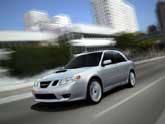
Page 3: Performance
Skip the base 9-2X Linear and its relatively weak 165-horsepower, 2.5-liter, single overhead-cam four-cylinder engine and stick with the 9-2X Aero, which comes with a turbocharged and intercooled, dual overhead-cam 2.0-liter motor that makes 227 horses. Both of these powerplants feature cylinders with pistons that fire horizontally rather than vertically, and are commonly known as horizontally opposed or boxer-type engines. A five-speed manual transmission is standard, and a four-speed automatic is optional, driving power to all four wheels. Our test 9-2X Aero came equipped with the manual gearbox; the automatic would have pushed the sticker price to a lofty $31,500. Decorating the hood of the Saab 9-2X Aero is a functional hood scoop that delivers cool air directly to the engine’s intercooler, helping the 3,179-pound car to accelerate to 60 mph in just over six seconds and achieve a top speed of 141 mph under optimum conditions, according to Saab. City/highway fuel economy ratings for the Aero are 20/26 with the manual transmission and 19/25 with the automatic, while the Linear manages 22/29 with the stick and 23/29 with the automatic. During our week driving the 9-2X Aero with the manual, we averaged 21.1 mpg, including a 900-mile highway stint at cruising speeds of 80 mph. And thanks to the large 15.9-gallon fuel tank, we enjoyed a substantial real-world range of more than 300 miles between fill-ups.
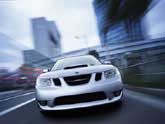
Page 4: Driving
Unquestionably, the Saab 9-2X Aero is quick, but deceptively so. From the driver’s seat, it doesn’t feel fast even though the speedometer needle is spinning rapidly toward triple digits. Like any Subaru with a manual gearbox, the Saab’s clutch engages decisively with little slip, so be sure the revs are up when launching the 9-2X. Otherwise, the resulting jack–rabbit start will have the college kid in the WRX next to you giggling hysterically. Once the Saab 9-2X is moving, it moves quickly whether in a straight line or threading curves on a twisty road. Shift action is a little notchy at the gate, and once the stick glides into gear the shifter is a bit floppy. You can feel the grumble of the boxer engine through the floor, the pedals, the steering column, and the shift knob; a characteristic adored in scrappy Subarus but perhaps not in sophisticated Saabs. Equipped with the optional Sport package, our test car rode on 17-inch alloy wheels and performance tires, stopped by four-wheel-disc antilock brakes with electronic brake-force distribution, and suspended by MacPherson struts in front and a triple-link independent setup in back. Saab has softened the suspension compared to the Subaru WRX, allowing more vertical motion and body roll in exchange for a less punishing ride. The result will please almost anyone, because the 9-2X is both communicative and comfortable. Despite the passenger-friendly suspension tuning, the Saab 9-2X Aero is still a treat to fling through corners. Punch the throttle in the middle of a turn, and all four tires scrabble for purchase as the car zooms forward with added velocity. The sticky shifter requires concentration during downshifts, and the brake pedal exhibits a hint of dead travel right at the top, but the steering is sharp and allows the driver to pick exactly the right line through a turn. No doubt, there’s plenty of fun to be had with the 9-2X Aero, so don’t let Saab or Subaru purists convince you that the car is somehow less authentic because of its badge or heritage.

Page 5: Interior
Saab fans will likely hate the interior of the 9-2X, which is carried over almost intact from the Subaru WRX. This means that the seating position is somewhat low on a rather firm, manually adjustable, sport-bolstered seat rather than chair height on a soft yet supportive, power driver’s seat. Regardless, the seat is comfortable enough for larger people, with barely enough seat track travel to allow a six-footer to find a proper driving position behind the wheel. Our test driver, who spent nine non-stop hours in the saddle, emerged from his road trip feeling fine if not invigorated. Rear seat passengers will need to be short, or children. Legroom is at a premium, and the Saab 9-2X is not a wide car, so hip and shoulder room also register on the small side of the spectrum. Perhaps it’s better to fold the standard 60/40-split rear seatback to increase cargo space from 27.9 cubic feet to 61.6 cubic feet. Typically, Saabs are tastefully dressed in plush fabrics, pungent leathers, matte-finished surfaces, and subdued color schemes, which make the rather rough textile upholstery, glossy hard plastics, bright fake aluminum trim, and garish contrasting seat and door inserts inside the 9-2X Aero an obvious departure from the Swedish standard. Even when opting for the leather interior, the 9-2X gets a two-tone interior treatment that may prove to be over-the-top for some potential buyers. Ironically, the new Subaru Legacy and Outback wagons, which cost about the same as the 9-2X but are larger inside and out, contain more Ikea influence in their cabin designs than this littlest of Saabs. Fortunately, everything inside the 9-2X is assembled with care; the interior of our test car exhibited tight gap tolerances, securely affixed trim, and few rattles and squeaks. The Saab 9-2X displays a heft and solidity to its design and construction that makes it feel like a high-quality piece of engineering. It also makes the driver feel safe, even if the most sophisticated technology designed to protect occupants is side-impact airbags for the front seat occupants. If you’re looking for stability control or side-curtain airbags, the Saab 9-2X is not going to deliver no matter what you’re willing to pay.
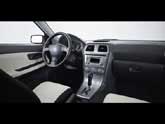
Page 6: Styling
Buying the 9-2X over the essentially identical and substantially less expensive Impreza 2.5TS or WRX might be considered a fool’s errand by some, but the Saab’s new styling certainly makes the Subarus look silly. Saab’s traditional three-port, chrome-ringed grille and upswept headlamps look great; the optional 10-spoke 17-inch alloys are almost appealing enough to justify their stupendous price tag; and the tidy new taillight lenses and blacked-out lower rear valence panel produce a rump that even Jennifer Lopez wouldn’t hide. Subarus are for kids who will take what they can afford; Saabs are for grown-ups who can pay extra for style. And “free” maintenance.

Page 7: Equipment
Standard equipment on all Saab 9-2Xs (aside from free maintenance) includes 16-inch alloy wheels, air conditioning, power windows, power mirrors, power door locks with remote keyless entry, cruise control, a tilt steering column, a height-adjustable driver’s seat, side-impact airbags for the front seats, a cargo cover, and a single CD player. In addition to the turbocharged engine, the Saab 9-2X Aero includes quicker steering, bigger brakes, fog lights, unique wheels, a chrome exhaust tip, premium textile upholstery, leather wrapping the steering wheel and shift knob, aluminum sport pedals, metallic rings around the gauges, automatic climate control with a cabin air filter, and an in-dash CD changer with premium speakers. Metallic paint is optional. So is an automatic transmission. A Premium package includes goodies like leather and Xenon headlights (add the CD changer and fog lights for the 9-2X Linear), while the Cold Weather package provides heated front seats, heated side mirrors, and a wiper de-icer. The Sport package is offered only on the Aero, and includes the wheel and tire upgrade along with a power sunroof. The sunroof is a stand-alone option on the Linear. Fully equipped, the Saab 9-2X can top $33,000.

Page 8: Wrap-up
Saab asks plenty of coin for a small station wagon made in Japan, roughly what a BMW 325xi wagon or Mercedes-Benz C240 wagon without any options might cost. That’s more than the starting price of a Lexus IS 300 SportCross. That’s more than the starting price of an Audi A4 Avant 1.8T. That’s more than the starting price of a Volvo V50 T5 AWD. That’s more than the starting price of a number of established competitors with more size, more prestige, or both. Saab says the true competition for the 9-2X is yet to come in the form of the Audi A3, the BMW 1-Series, the Mercedes-Benz B-Class, and others. Perhaps by transforming a Subaru into a Saab, the company has gotten a jump on the competition. Maybe there is an untapped desire amongst ever-larger Americans wanting to pay a premium for ever-smaller European cars with luxury badges pasted onto them. We’re not convinced that this is the case…yet. Evaluated on its merits, the Saab 9-2X is a great little car. Evaluated within the context of the American marketplace, the unusual, offbeat, and quirky Saab 9-2X appears to be the answer to a question nobody has asked.
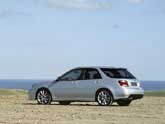
Page 9: Specifications
Test Vehicle: 2005 Saab 9-2X Aero Engine Size and Type: 2.0-liter, turbocharged, horizontally-opposed four-cylinder Engine Horsepower: 227 at 6,000 rpm Engine Torque: 217 at 4,000 rpm EPA Fuel Economy (city/highway): 20/26 Observed Fuel Economy: 21.1 mpg Curb Weight: 3,179 lbs. Competitors: Audi A4 Avant 1.8T, BMW 325xi Wagon, Chrysler PT Cruiser GT, Ford Escape Hybrid, Jaguar X-Type Wagon, Land Rover Freelander, Lexus IS 300 SportCross, Mazda 6s Wagon, Mercedes-Benz C240 Wagon, Mercury Mariner V6, Nissan Murano SE, Subaru Forester 2.5XT, Subaru Impreza 2.5TS, Subaru Legacy GT Wagon, Subaru Outback 2.5XT, Subaru WRX Wagon, Volkswagen Jetta GLS Wagon 1.8T, Volkswagen Passat Wagon, Volvo V50, Volvo V70 2.5T
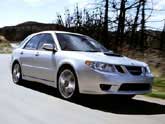
Page 10: FAQ
Is the Saab 9-2X a good car? Yes, it is a great car that almost nobody will buy. Since it is based on the Subaru Impreza and Subaru WRX, the Saab 9-2X features sound engineering, strong character, and should prove to be quite reliable over time. The Saab 9-2X Aero is also quite fun to drive.
Is the Saab 9-2X worth the price premium over the Subaru Impreza and WRX? No, not in our opinion. Unless you severely dislike the styling of the Subaru models, the Saab 9-2X utterly lacks anything resembling a value equation.
How different is the Saab 9-2X from the Subarus upon which it is based? From behind the steering wheel, the only clue that you’re in a Saab and not a Subaru is the giant corporate logo decorating the driver’s airbag hub. The 9-2X sounds, smells, and drives just like a Subaru. Our Aero test car offered a better ride quality and suffered more body roll than an equivalent WRX, but otherwise the cars are essentially identical.
What else should I consider? Assuming you want a luxury-brand vehicle with utility, we strongly recommend cross-shopping the Audi A4 Avant, the Lexus IS 300 SportCross, and the Volvo V50.
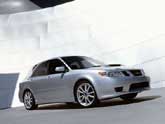
Page 11: Genesis
Crafted by a former Swedish WWII aircraft manufacturer called the Svenska Aeroplan Aktiebolaget (SAAB), Saabs have long been different, pioneering aerodynamics, safety, turbocharged four-cylinder engines, front-wheel-drive, and hatchback utility in strangely designed packages with ignition slots located on the floor between the seats. Quirky is an apt description of Saabs past, but not necessarily present. Subarus, reliable cars crafted by a former Japanese WWII aircraft manufacturer called the Nakajima Aircraft Company (NAC), are also quirky. Like Saab, Subaru concentrated on cutting edge design and engineering to distinguish itself, bringing highly-evolved all-wheel-drive systems; unconventional four- and six-cylinder engines with horizontally opposed cylinders; and stylistic oddities such as the Brat pickup, XT6 sport coupe and SVX sports car to a select group of anti-establishment types. In recent years, Subarus, like Saabs, have gotten more mainstream and sales have increased as a result. Today, the decidedly mainstream leviathan known as General Motors owns Saab and controls Subaru through significant investment in the latter automaker’s parent company, Fuji Heavy Industries. Not surprisingly, GM wants to squeeze more profit from Saab and Subaru, and when profits surpass design and engineering in terms of importance, quirky character is one of the first things to die. Detroit’s corporate influence on once proud Saab has not been positive. In 2004, 10 years after becoming a GM division, Saab no longer had a hatchback in the lineup, was planning to launch a restyled Chevy TrailBlazer as its luxury suv offering, had crafted a bread-and-butter entry luxury car from a common platform that also served the Chevy Malibu, and fielded a six-year-old flagship luxury sedan that had no replacement in sight. In the 1980s, marketers could legitimately claim that Saabs were forward-thinking cars driven by intelligent people. Not so, today. Safety and discounted lease contracts are the main reasons to choose a Saab now. Until this year, Subaru had managed to escape GM’s voracious desire to multi-purpose nearly every vehicle in its too-broad brand portfolio. When word came that GM planned to slap a Saab nose onto the Subaru Impreza and WRX wagons to create a new entry-level model for its Swedish luxury car division called the 9-2X, Subaru was displeased, in part because the company wants to move upscale, and sharing with Saab makes that harder than easier. Saab loyalists, many of whom still hope in vain that decision-making will be returned to Trollhattan from Detroit, also got a hitch in their britches over the plan. As a business case, the marriage between Saab and Subaru makes sense, and could help to alleviate the brand dilution that has ravaged the Swedish automaker. Both companies emerged from aircraft manufacturers after WWII. Both companies have taken the road less traveled when it comes to vehicle design and engineering. Both companies are known for offbeat products. Taking the quirky Subaru Impreza Wagon and repurposing it to grow the stale Saab lineup while simultaneously re-establishing a hatchback in dealer showrooms made perfect sense on paper. But because both Saab and Subaru enjoy core contingents of fiercely loyal buyers, buying one is a more emotional decision than a run-of-the-mill Buick, Chevy, or Pontiac. Emotionally invested buyers don’t care if the new 2005 Saab 9-2X promises all-weather handling capability, a proven record of durability, a handy hatchback design, a fun-to-drive nature, and a quirky personality. They want to know why the ignition isn’t on the floor between the seats. They want to know why the window sticker says that the Saab 9-2X is 100-percent Japanese, assembled with care in Ota Gunma, Japan. They want to know where the cushy ride quality and significant body roll has gone. They want to know why the whistle of a turbocharged inline four has been replaced by the grumble of a boxer engine. Good thing GM cares less about Saab’s loyalists and more about attracting new buyers to the brand, because fanatical focus on company and product heritage misses the fundamental truth of the 2005 Saab 9-2X: This car is a terrific, but overpriced, alternative to the status quo.
